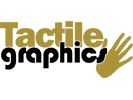|
|
|

|
|
Improving Access To Graphical Images for Blind Students
Software Overview
The Tactile Graphics Assistant (TGA) is a program created at the University of Washington to aid in the tactile image translation process. The TGA separates text from an image so that the text can later be replaced by Braille and inserted back onto the image. In order to streamline the text selection process, the TGA employs machine learning to recognize text so that large groups (possibly hundreds) of images can be translated at a time.
Download Tactile Graphics Assistant
To download the Tactile Graphic Assistant please go to the Download page on the left. Any questions you may have can be answered in the TGA help forum. The forum link can be found on the Resources page. For examples of hundreds images already translated using the TGA, visit the Available Books page.
Example of the TGA in Action
The sample image below shows how the TGA can select text from an image and remove it. The text can later be translated to Braille and put back on the image.
Tactile Graphics Translation Process Overview
The Tactile Graphics Project is aimed at streamlining the tactile image translation process to produce graphics in the most efficient way. This means, with the right tools, producing images that are inexpensive, quick, and easily customizable. The workflow we have designed below achieves this goal:
-
Step 1: Obtain images in proper format and rename
In this step, you will scan the images and put them into the correct file format using Photoshop.
-
Step 2: Preprocess with Photoshop
Using your images, you will crop and threshold them to prepare them for the TGA.
-
Step 3: Classify images and create working folders
In this step, you will divide the images into different subfolders based on similar characteristics. This helps to reduce errors when batch processing in the TGA.
-
Step 4: The TGA
The TGA will extract and separate the text from your images. The TGA's output are a text-free image and an image that contains only the text labels.
-
Step 5: OCR
Using the image containing only the text labels, you will use OCR to turn the image into text labels.
-
Step 6: Braille Translation
The text labels will be translated into Grade 2 Literary Braille.
-
Step 7: Using the Scripts
The first script will resize your text-less images and the second script will place Braille text onto those images.
-
Step 8: Editing in Illustrator and Photoshop
In this step, you will touch up your images and finalize them.
Workflow Chart
This chart will give you a visual image of the translation process described above.
|


 CSE Home
CSE Home  About Us
About Us Search
Search Contact Info
Contact Info